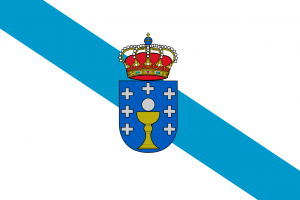Difference between revisions of "Language/Galician/Vocabulary/Fruits"
m (Quick edit) |
m (Quick edit) |
||
| Line 8: | Line 8: | ||
__TOC__ | __TOC__ | ||
<span link>Don't hesitate to look into these other pages after completing this lesson: [[Language/Galician/Vocabulary/Colors|Colors]] & [[Language/Galician/Vocabulary/Camping|Camping]].</span> | |||
== Fruits in Galician == | == Fruits in Galician == | ||
Here is a table containing some common Galician fruits vocabulary: | Here is a table containing some common Galician fruits vocabulary: | ||
{| class="wikitable" | {| class="wikitable" | ||
| Line 54: | Line 55: | ||
To improve your [[Language/Galician|Galician]] [[Language/Galician/Vocabulary|Vocabulary]], you can also use the [https://polyglotclub.com Polyglot Club] website. [https://polyglotclub.com/find-friends.php?search=send&d=0&f=36&offre1=45 Find native speakers] and ask them any [https://polyglotclub.com/language/galician/question questions]! | To improve your [[Language/Galician|Galician]] [[Language/Galician/Vocabulary|Vocabulary]], you can also use the [https://polyglotclub.com Polyglot Club] website. [https://polyglotclub.com/find-friends.php?search=send&d=0&f=36&offre1=45 Find native speakers] and ask them any [https://polyglotclub.com/language/galician/question questions]! | ||
<span class='maj'></span> | <span class='maj'></span> | ||
| Line 68: | Line 68: | ||
}} | }} | ||
==Other Lessons== | |||
== | |||
* [[Language/Galician/Vocabulary/Clothes|Clothes]] | * [[Language/Galician/Vocabulary/Clothes|Clothes]] | ||
* [[Language/Galician/Vocabulary/Parts-of-the-Body|Parts of the Body]] | * [[Language/Galician/Vocabulary/Parts-of-the-Body|Parts of the Body]] | ||
| Line 82: | Line 81: | ||
{{Galician-Page-Bottom}} | {{Galician-Page-Bottom}} | ||
<span links></span> | |||
Latest revision as of 21:58, 27 March 2023
Hi Galician learners! 😊
In this lesson, we will be learning vocabulary related to fruits. You will also learn some interesting facts about Galician fruits and their culture.
Let's get started with the table below. Don't hesitate to add more words by editing the page!
Don't hesitate to look into these other pages after completing this lesson: Colors & Camping.
Fruits in Galician[edit | edit source]
Here is a table containing some common Galician fruits vocabulary:
| Galician | Pronunciation | English |
|---|---|---|
| mazá | maˈθa | apple |
| laranxa | laˈɾaŋʃa | orange |
| plátano | ˈplatanʊ | banana |
| pera | peˈɾa | pear |
| kiwi | ˈkiwi | kiwi |
| piña | ˈpiɲa | pineapple |
| uva | ˈuβa | grape |
| mazá de cuxa | maˈθa ðɪ ˈkuʃa | quince |
| perexil | peɾeˈʃil | persimmon |
| melón | meˈlon | melon |
| sandía | sanˈdi.a | watermelon |
| perejil | peɾeˈʒil | parsley (yes, parsley is a fruit in Galicia!) |
Fruits are an important part of Galician culture. The region is known for its mild climate and fertile soil, which allows for a wide variety of fruits to grow. One unique fruit is the "mazá de cuxa," which is a type of quince that is native to Galicia. It is often used to make marmalades and other sweets.
Now, let's see some fruits in context with a dialogue:
- Person 1: ¿Che gustan as mazás? (Do you like apples?)
- Person 2: Si, moito! (Yes, I like them a lot!)
- Person 1: Pois temos unha mazáira no noso xardín. (Well, we have an apple tree in our garden.)
- Person 2: ¡Que interese! (How interesting!)
Fun Facts[edit | edit source]
- The largest producer of kiwi in Europe is the Galician region of Spain. The mild climate and fertile soil make it the perfect place to cultivate this fruit. - In Galician folklore, the quince is associated with love and good luck. It is often given as a wedding gift or used in love spells.
To improve your Galician Vocabulary, you can also use the Polyglot Club website. Find native speakers and ask them any questions!
Sources[edit | edit source]
- Galician lessons: Sweet fruits
- Galician Fruits & Vegetables | POLYMATH.ORG
- Food and Drinks in Galician | Pinhok Languages
Other Lessons[edit | edit source]
- Clothes
- Parts of the Body
- Essencial phrases in Galician
- Days of the Week
- Problems in Galician
- Asking Directions
- Camping
- Numbers
- Seasons
- Feelings and Emotions
